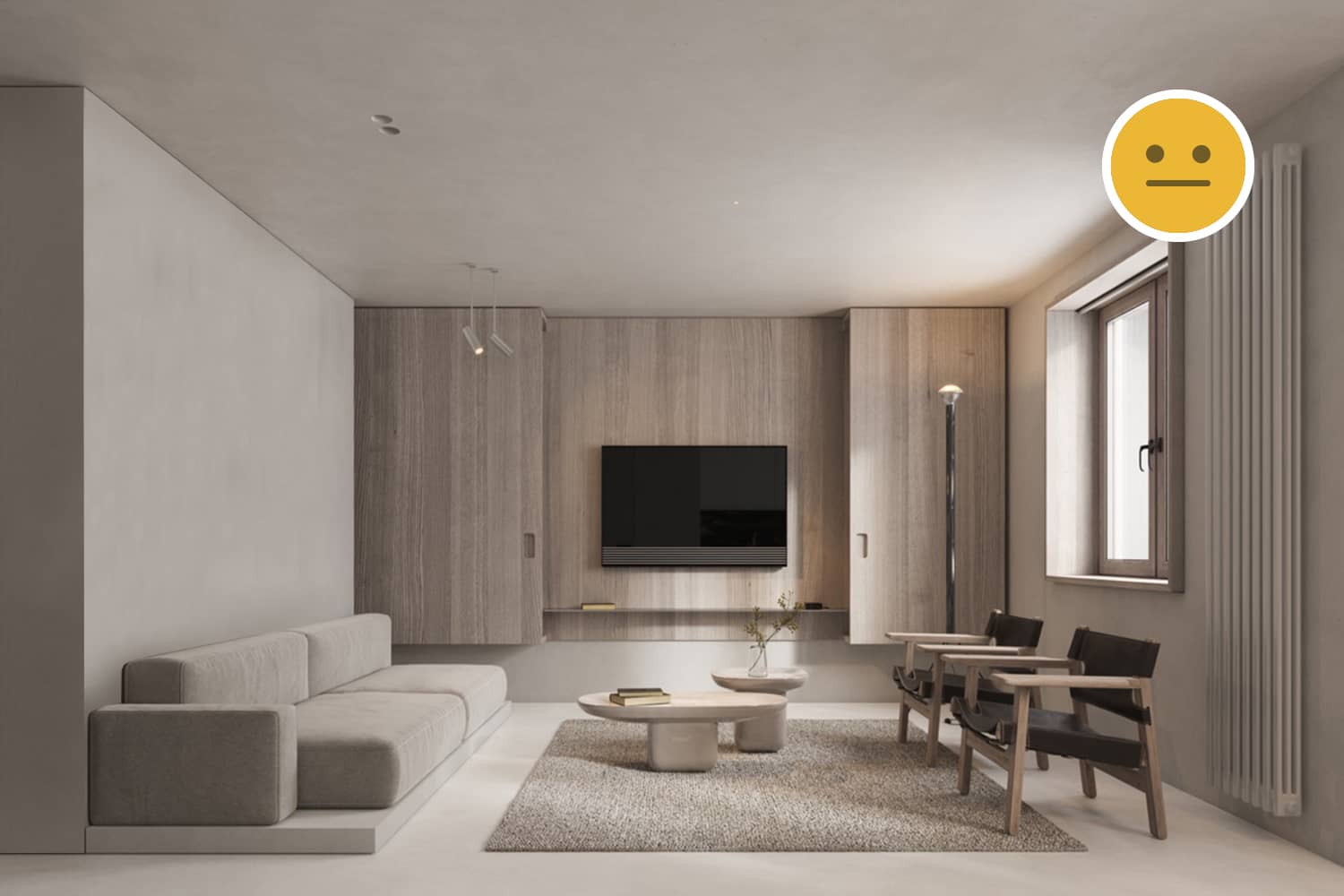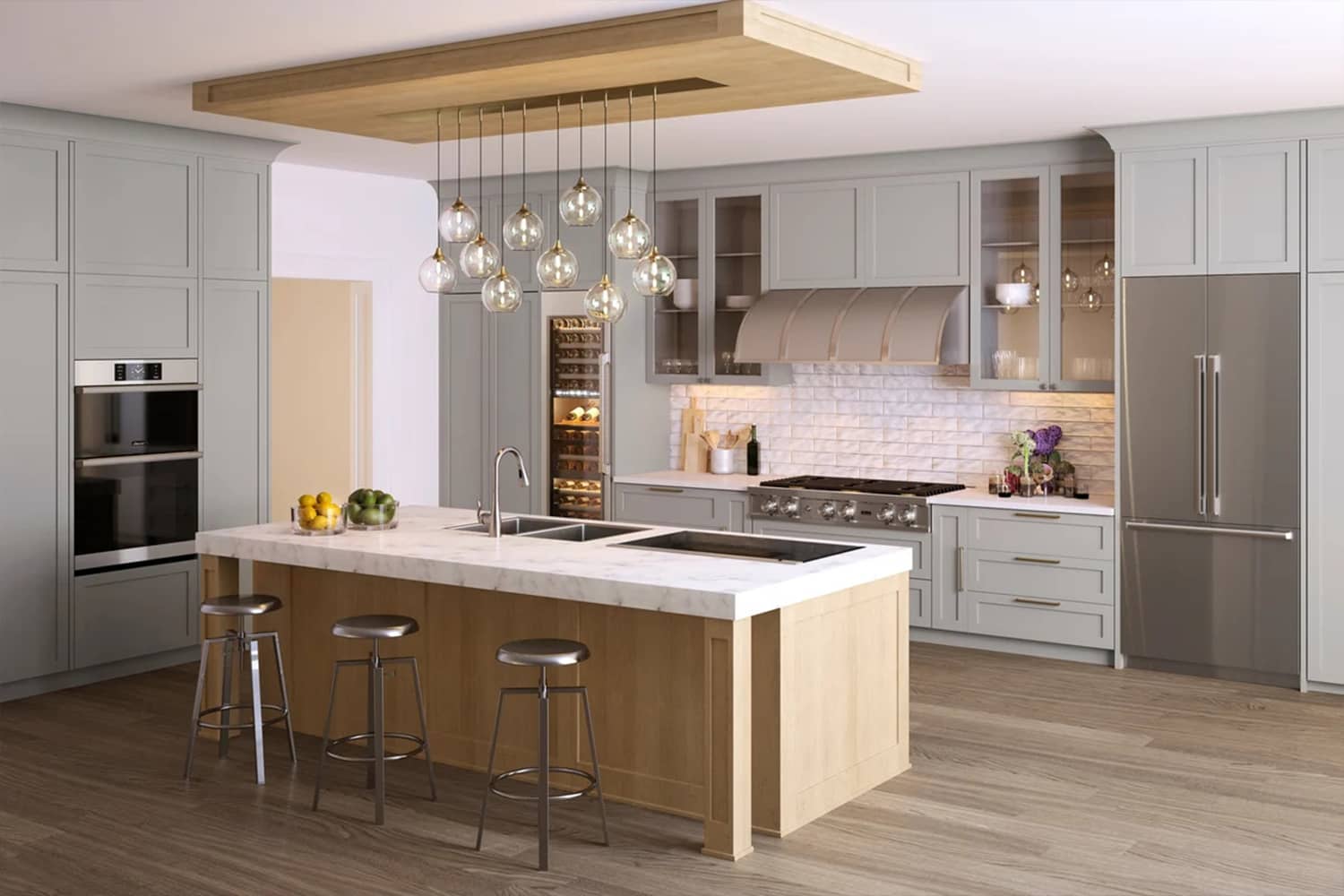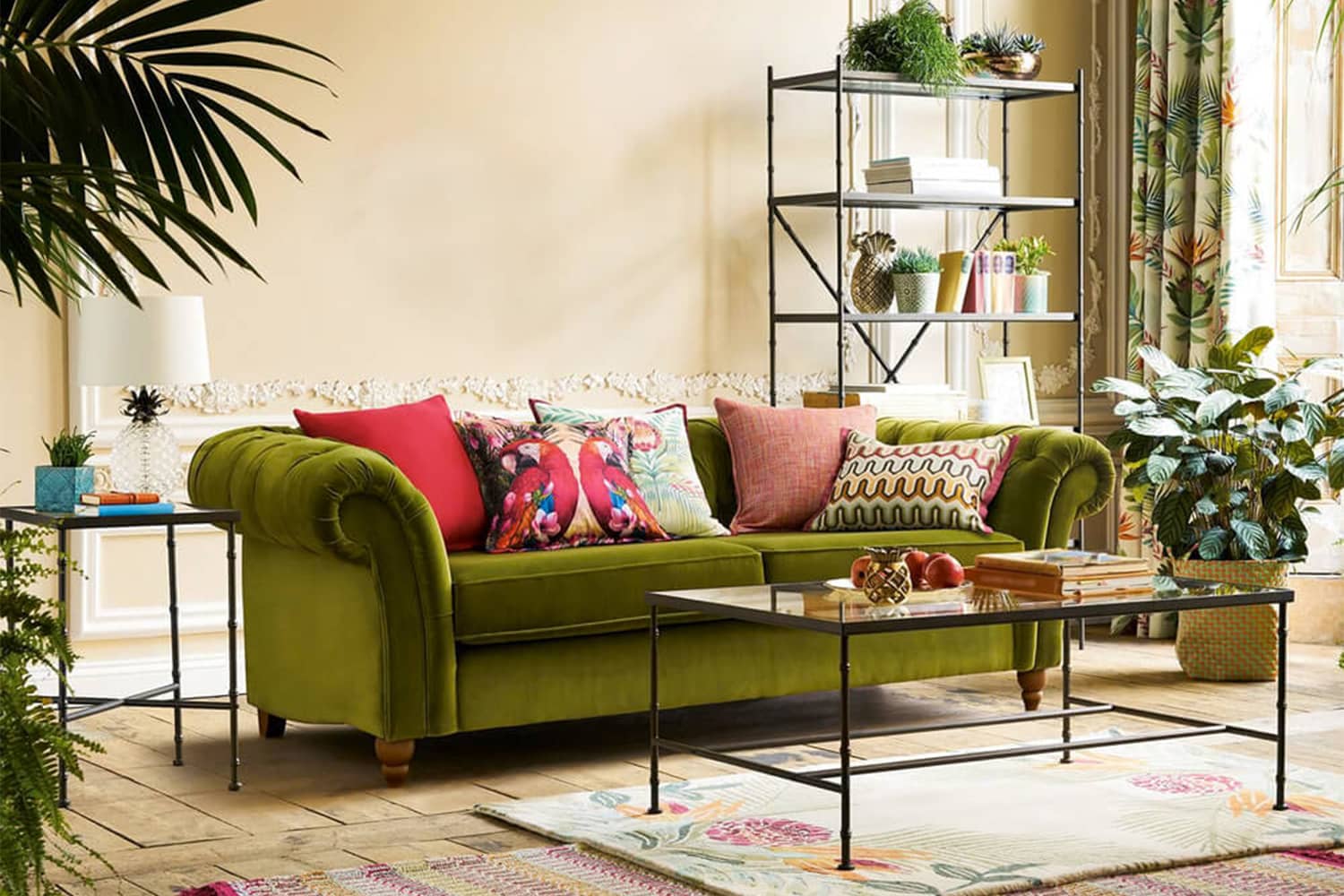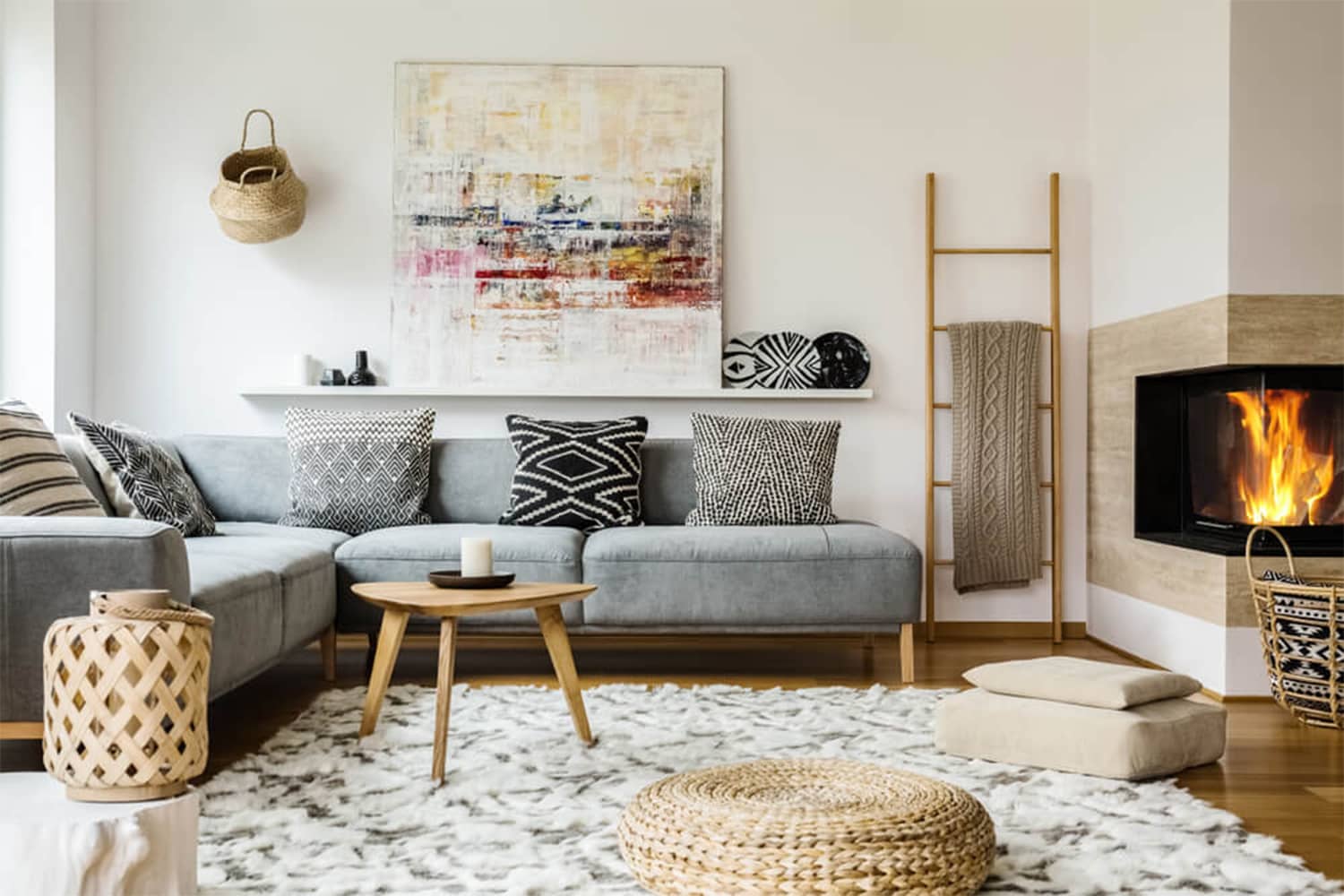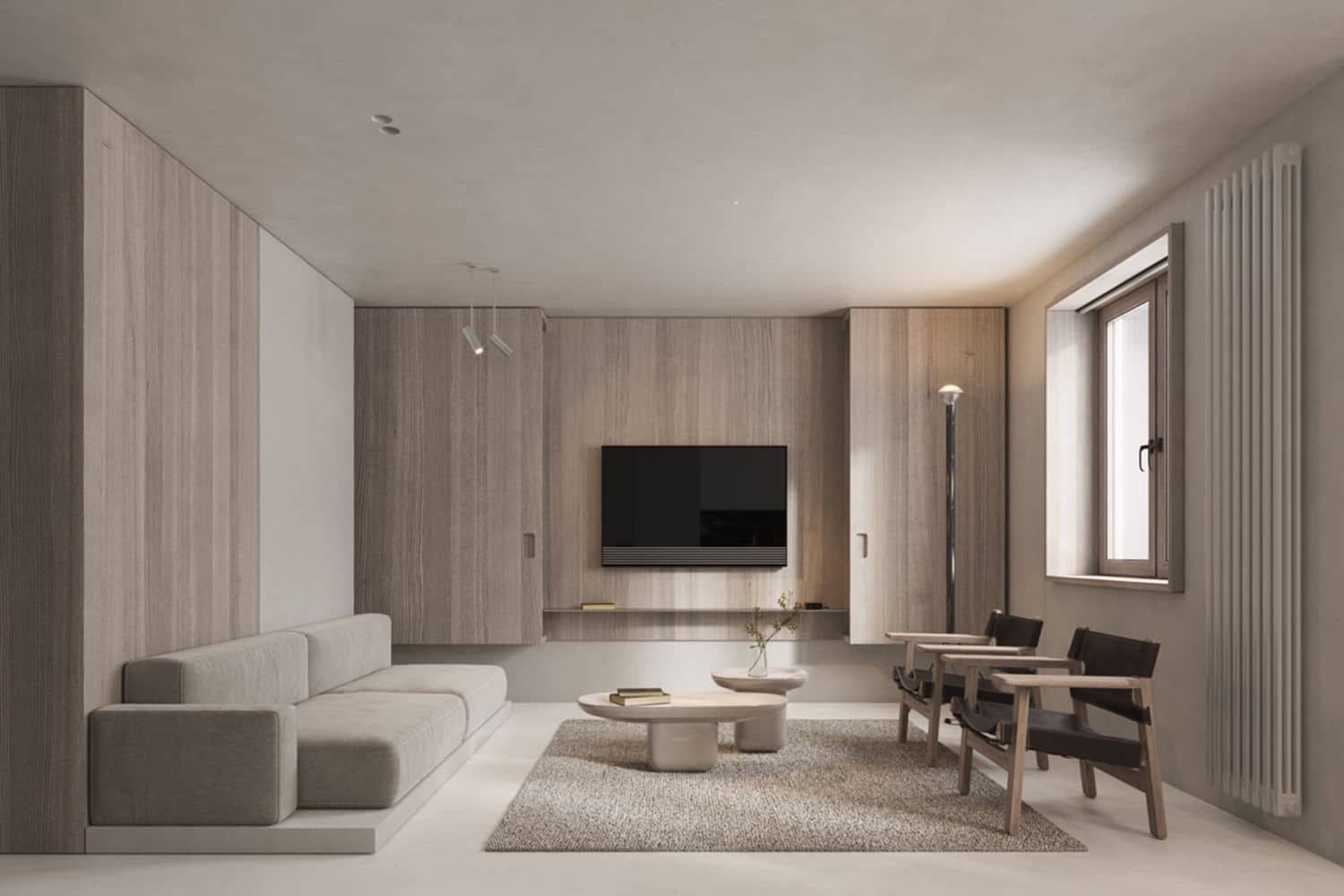
www.home-designing.com
Design Review 10
Things to Learn
What are design ideologies and why to use them.
How a space can look aesthetic with few colours and no decor.
The Layout
Light
The window to the right is a the source of natural light here. Artificial lighting seems inadequate as there is only accent lighting in the form of spot lights and no source of artificial ambient lighting is visible.
Arrangement
There are two rows of seating parallel to each other with space for accessibility in between. Watching the TV from the seating would require an uncomfortable neck position, thus facilitating human interaction over media consumption.
The Background
Colours
The ceiling, walls and flooring are monochromatic using an off-white colour. The light-brown wooden TV cabinet toward the back adds low-contrast to the setting.
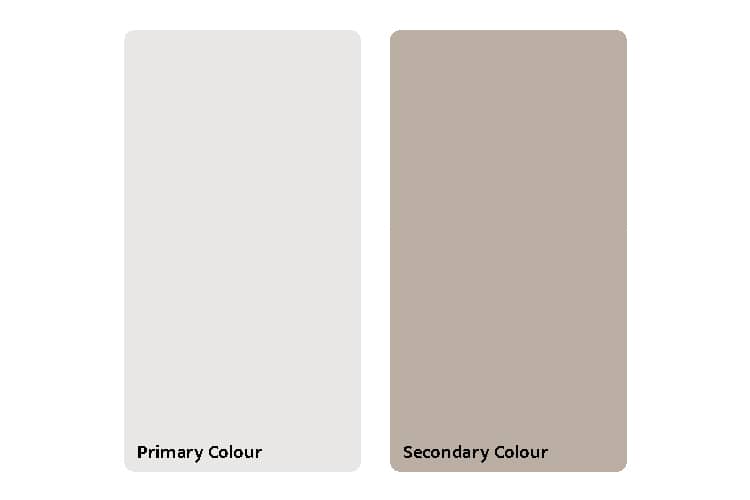
The background colours are monochromatic but the wooden finish in few places adds contrast leading to an analogous colour palette.
More Visual Contrast
Given this design language, it is highly probable that the similar wooden panel behind the sofa is also a piece of furniture, mostly storage cabinetry. The same wall should not have multiple materials ideally, but using multiple components like the multiple cabinets provides an opportunity to do so. We can see that half of the cabinetry has wooden finish to add visual contrast.
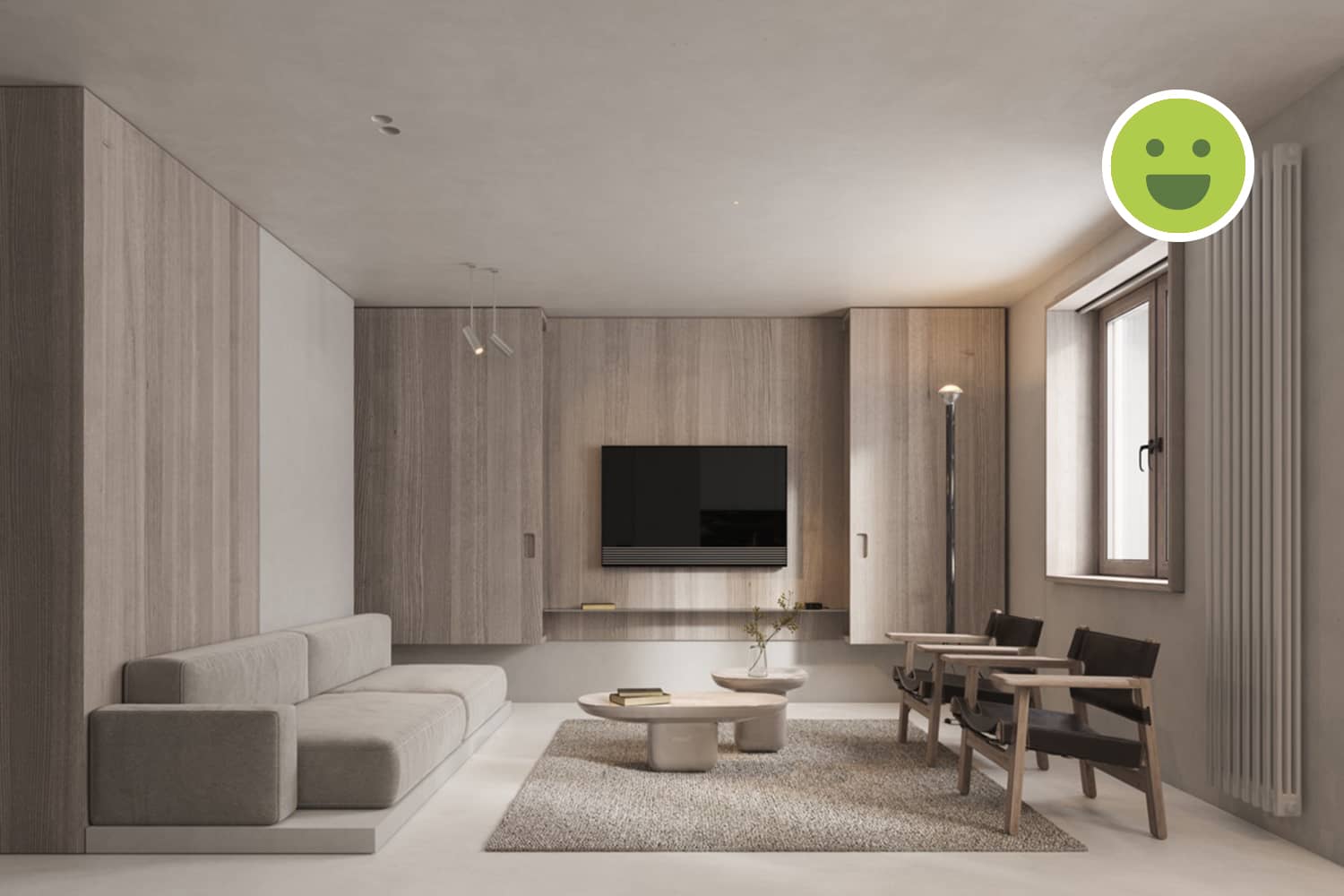
The Foreground
Furniture
Typology
The sofa is simply an elevated platform with large cushions on it. It is important to acknowledge the impact elevation has on a space: it acts as a method to demarcate a zone within a space. Here, we see how the platform defines the boundaries of the seating on the sofa. The rest of the furniture is what we would define as conventional.

Design Style
The chairs with wooden supports and fabric as seats and backrests are different from the sofa. Being a different typology of seating, the design style of these chairs do not need to conform to that of the sofa. The center tables are also a different design style, but they use a different building material and serve a different function. Hence, they need not be bound by a similar design style by either the sofa or the chairs.
As long as elements that build a space are true to the overarching ideology: Minimalism in this case, they need not follow similar design styles as following the ideology comes is more important.
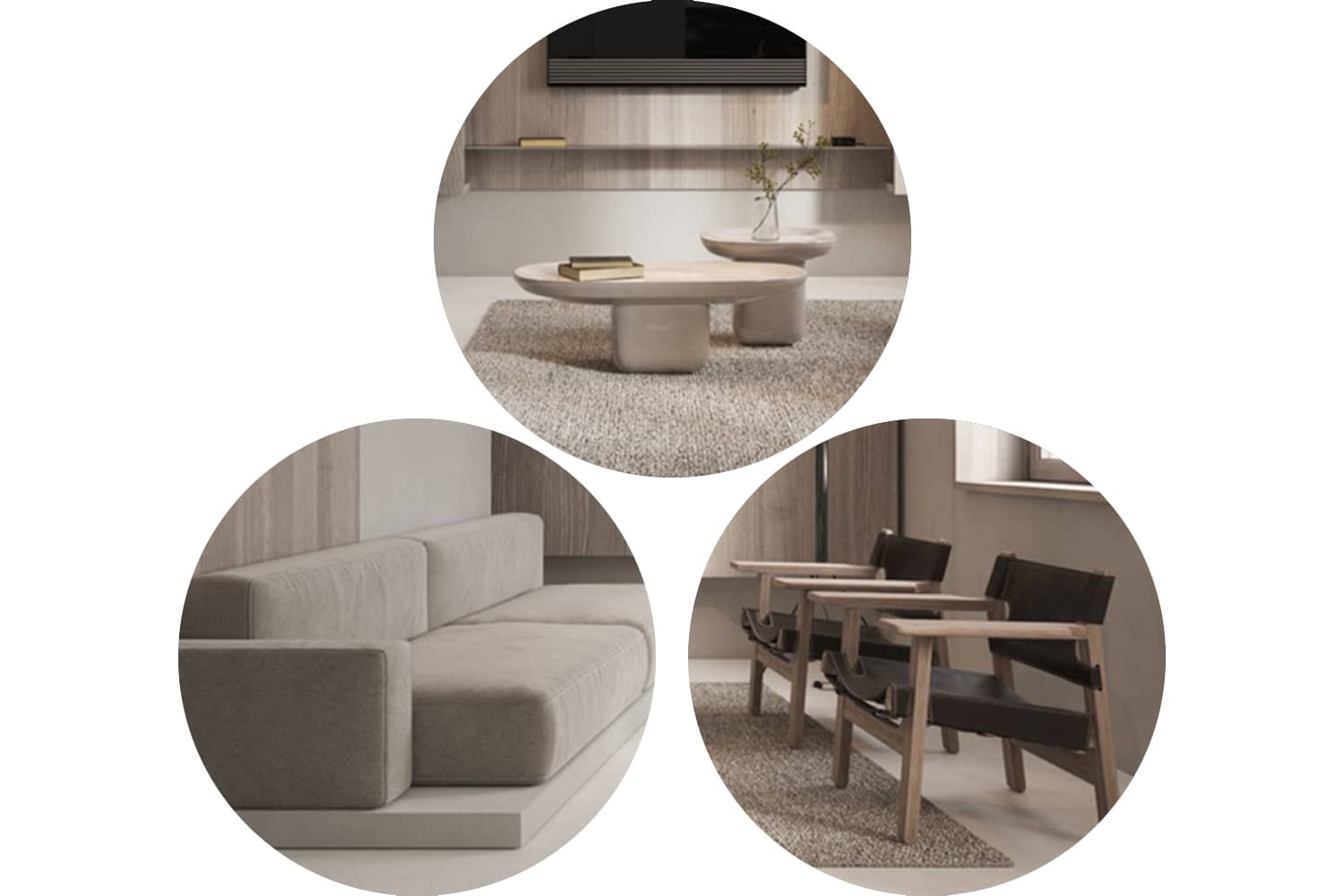
Clockwise from top-left: The center tables; wooden chairs; sofa as cushions on a platform.
Decor
Absence of Decor
Minimalism is based on reductionist principles of removing elements from the context that may be removed without compromising the function. Generally, its aesthetics are derived from pop-culture where spaces are often plain, monochromatic and devoid of decor. Here, the room has no significant decor other than a rug that spans the distance between the two sides of the seating to emphasize their association.
Summary
Following an Ideology to create Aesthetic Spaces
There exist several distinct ideologies in architecture design. Many of these are not just design styles but are sophisticated schools of thought, others are merely design trends. Staying true to an ideology requires great study and following a desired ideology correctly can certainly yield beautiful results. Here, we can see how Minimalism has been implemented correctly and the space looks aesthetically appealing with very few colours and no decor.


